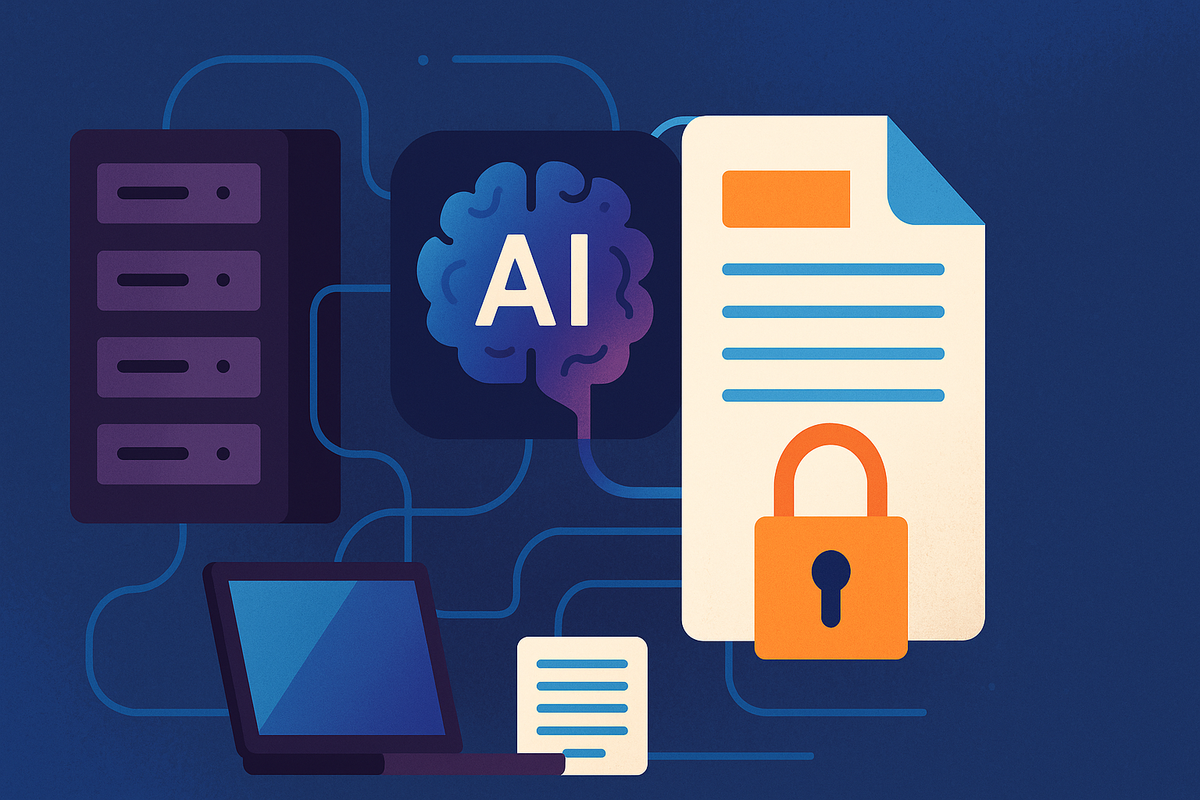Why On-Premise and On-Device GenAI Deserve Serious Attention in Legal Practice

Legal work is built on trust. Clients hand over their most sensitive information because they assume it will be handled with care, behind systems and processes that protect their confidentiality. That assumption holds across everything a firm does, from advice to administration, and technology is no exception.
As generative AI tools continue to evolve, they offer clear benefits for legal teams. Faster research, more consistent drafting, quicker access to internal knowledge, however most of the well-known tools were designed for mass-market use, not for regulated legal work. They are built to be flexible, scalable and cloud-native, with data often processed in external environments. In most business functions, that’s acceptable. In legal practice, especially where client confidentiality is central, it rarely is.
For firms operating in high-trust domains, public infrastructure isn’t enough. The only way to use these tools responsibly is to bring them inside the perimeter.
Confidentiality must define the architecture
Plenty of AI platforms offer assurances around privacy. Some allow users to disable training or delete content history, but these are features within someone else’s system. The data has already left your control, and you are relying on a contractual promise rather than your own oversight.
That approach doesn’t align with how legal services are regulated, or how clients expect their information to be handled. It introduces unnecessary risk, and undermines the very standard the profession is supposed to uphold.
This isn’t about resisting AI. It’s about implementing it in a way that respects the core principles of the job.
A private-first approach to GenAI
Bringing GenAI into legal workflows doesn’t require exposing client data to the internet. Firms can run these models entirely on internal infrastructure. That might mean secure on-premise servers within the firm’s own data centre, or high-spec local machines used in tightly controlled environments. Modern laptops and desktops, particularly top-end Windows machines or MacBooks are way more than capable of supporting high quality locally run models for most drafting and analysis tasks.
The principle is simple. Legal AI systems should be built with the same mindset applied to document management, contract storage, and deal rooms. Keep the data close. Control the flow. Maintain auditability at every stage.
With the right design, firms can develop tools that handle:
- Drafting of standard documentation using internal precedent libraries
- Review and summarisation of client documents without external processing
- Q&A tools trained only on the firm’s verified knowledge base
- Internal compliance support or clause comparison across prior matters
For vendors building in this space, the same design principles apply. A well-structured, containerised stack should be capable of running entirely on premise, especially where firms operate under higher confidentiality obligations. The ability to deploy AI infrastructure behind the firewall, not just as a cloud instance with a service agreement, will increasingly be seen as a baseline requirement in regulated or reputationally sensitive environments.
None of this requires public APIs, or external dependencies. It just requires intentional design with the budget and appetite to do it properly.
Implementation without compromise
Getting this right is less about technology and more about posture. Start with a clear use case where public tools are clearly unsuitable. Common examples include sensitive corporate structuring, fund documentation, regulated client correspondence or trust matters.
From there, define the environment. If deploying internally, use isolated systems with no internet access, robust access controls, and full logging. If using high-end devices locally, ensure they are encrypted, centrally monitored, and integrated with your firm’s security framework.
Avoid generic models trained on public data. Instead, apply retrieval-based techniques to guide the model toward your firm’s own knowledge and templates. That gives you both relevance and traceability. Crucially, invest in education. Make sure teams understand where the model fits into their work, and when review or supervision is required.
This isn’t about over-engineering. It’s about aligning with existing legal standards and avoiding shortcuts that would never be accepted elsewhere in the client workflow.
The stakes are higher in high-trust, cross-border legal work
While this principle applies across the legal sector, it becomes even more important in areas where jurisdictional secrecy, regulatory complexity or multi-party trust structures are involved. Many offshore practices fall into exactly that category. Clients choose these firms precisely because of their reputation for discretion and control, because that expectation doesn’t disappear when new tools are introduced. If anything, it increases.
In that environment, it is not enough to assume that cloud infrastructure is “secure enough.” Firms need to be able to demonstrate that data never left systems under their control. That’s not just a comfort for clients. It is often a legal requirement under the terms of engagement or the regulatory regime in which the firm operates.
By adopting a private-first model from the outset, firms can ensure that GenAI is a tool of advantage, not a source of vulnerability. The technology is now mature enough to support this. The question is no longer whether it can be done, it is whether the firm has the discipline and clarity to insist on it.
Done well, private GenAI systems create new possibilities. They support knowledge sharing across jurisdictions without exposing content externally. They allow for faster, more consistent delivery of common documents without sacrificing quality or security. They reduce the burden on teams without compromising oversight.
Most importantly, they offer a way forward that aligns with how clients already expect legal work to be done.
This doesn’t mean every task must be handled locally forever, but it does mean the firm should remain in control of when data leaves, how it is processed, and what level of assurance is given to those involved.
By putting privacy at the centre of the architecture, firms give themselves the flexibility to scale safely. They build systems clients can trust without needing to ask too many questions. And they ensure that legal AI remains not just effective, but defensible.